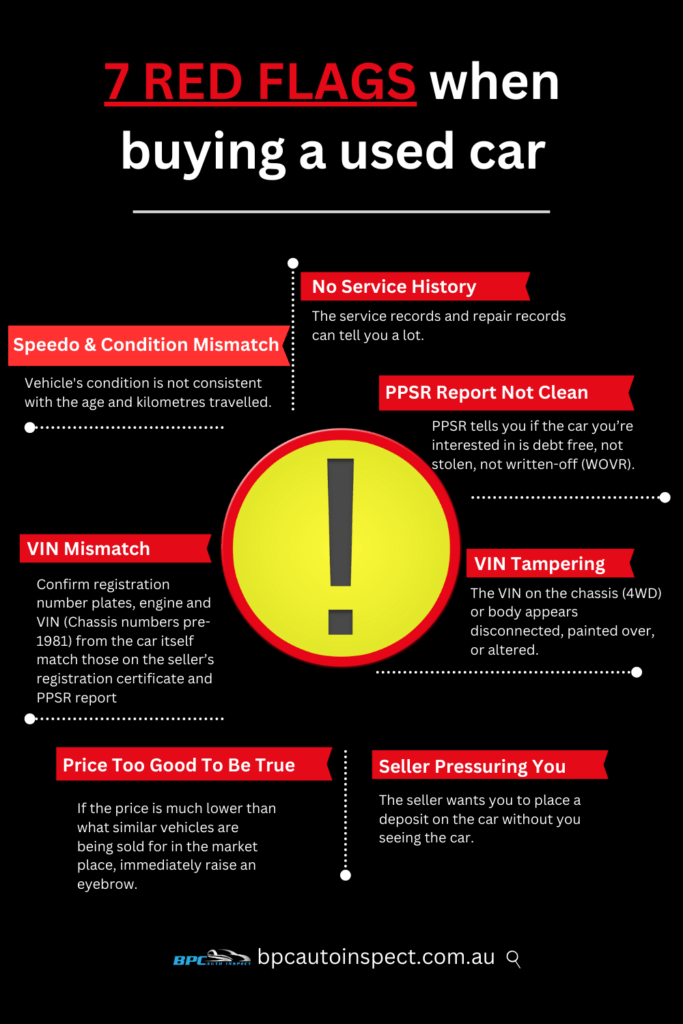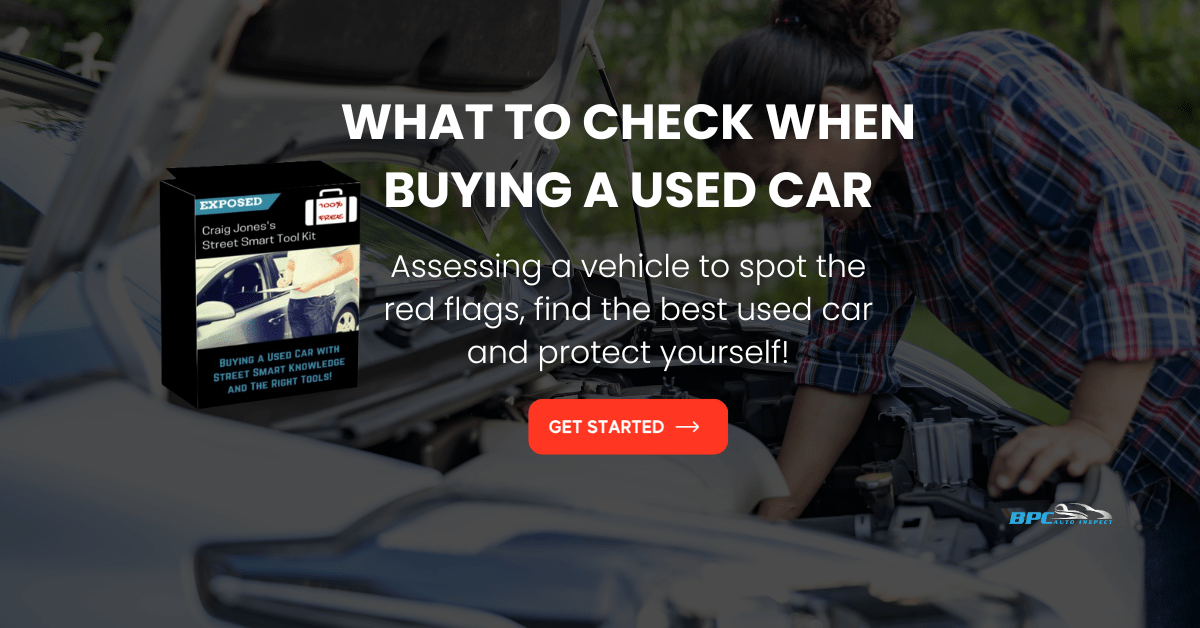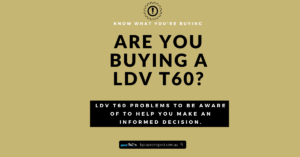Discover essential tips on what to check when buying a used car so you can assess vehicles quickly and make a smart, safe purchase.
In this article
What to Check When Buying a Used Car in Australia?
When buying a used car in Australia, it’s important to perform thorough checks to ensure you’re getting a reliable vehicle and not inheriting someone else’s problems.
Of course, getting a mechanic to inspect a used car is a wise choice. However, this used car buying guide on how to check a car’s condition before buying will walk you through the critical steps and areas to inspect that you can do yourself before deciding to put down a deposit or purchase.
Check the Overall Condition of the Vehicle for Odometer Fraud (odometer rollback) Using These Tell-Tale Signs:
The vehicle’s condition can provide significant insights into its history and how well it has been maintained. Before buying a second-hand car start with a complete overview of the vehicle’s exterior and interior, including the car’s body, tyres, engine, and kilometres.
- If the car has low mileage and is under two years old, compare it with the tyres including the spare. Tread depth indicators are essential to assess tyre wear, with a minimum of 1.5mm recommended. Additionally, check for UV damage signs like discolouration, cracks, or brittleness.
- Does the interior wear and tear including seat belts match the displayed kilometres, as the speedometer may have been tampered with (wound back)?
Ask yourself, “Does the overall condition align with the age and kilometres travelled? Remember, average kilometres vary based on usage, location, and vehicle type. On average, private use is around 15,000 kilometres per year, higher for company use”. Be cautious of unusually low mileage for older cars as it could indicate odometer tampering.
Interior Inspection
- Inspect the condition of the seats, carpets, and upholstery.
- Check the functionality of electronic components like the audio system, air conditioning and dashboard lights.
- Ensure all safety features such as seat belts and airbags are in good condition and working order.
- Look for any signs of water damage or unusual odours indicating a flood-damaged car or leaks.
Exterior Inspection
- Examine the paintwork for inconsistencies, rust spots, and scratches.
- Check for any mismatched paint that could indicate repairs from an accident.
- Look for any dents, dings, or signs of structural damage.
- Inspect all windows and lights for cracks or chips.
Chassis & Body Inspection
- Ensure the chassis and body is free from rust and damage.
- Check the alignment of the body panels and doors to ensure there hasn’t been any major impact damage.
- Look underneath the car for any signs of rust, leaks, or damage to the undercarriage.
- Look for any signs of an ex-mining vehicle for sale.
Tyre Inspection
- Check the tyre tread depth and look for any uneven wear which could indicate alignment issues.
- Ensure the tyres are of the same brand and type for consistent performance.
- Look for any cracks, bulges, or signs of dry rot.
Engine Inspection
- Check for any oil leaks or unusual noises when the engine is running.
- Inspect the condition of the engine oil, coolant, and other fluids.
- Look for any signs of corrosion or damage to the engine components.
Test Drive
Before starting the car to take a road test, note if the engine is cold. A cold-start test can allow you to check for a tinny rattling noise indicating a stretched timing chain or a tapping sound like noisy lifters like the video below.
When Taking the Car for a Test Drive
Before driving off check car registration status it’s adequately insured.
- Choose quiet roads to focus on the vehicle.
- Take your time and evaluate engine performance during cruising, accelerating, and decelerating on various terrains.
- Ensure smooth gear shifts and monitor the dashboard for warning lights and temperature gauges.
- Listen for rattles or body noises over speed humps.
- Check for smoke in the exhaust during uphill acceleration.
- Assess steering play, potential pulling, and brake performance.
If you have more than one car you’re interested in buying, the road test helps you make a product decision better. It also lets you feel if the car’s odometer is genuine. When you return from your test drive, listen for any engine noises on idle and look underneath the car for fluid leaks.
Check the Vehicle’s Service History
The service records and repair records can tell you a lot. Look for evidence of routine maintenance, such as oil changes and fluid replacements. A well-documented service history indicates the previous owner(s) took proper care.
Look for evidence of routine maintenance, such as oil changes and fluid replacements. A well-documented service history indicates the previous owner(s) took proper care. Following the manufacturer’s recommendations will likely lead to better performance and reliability.
Look for regular replacement service items that have been replaced and the date they were replaced. Here is a list:
- Engine oil: Prevents premature engine wear.
- Engine oil filter: Usually done at the same time the engine oil is replaced.
- Air filter: Maintains the inside of the engine by keeping it free of dust, insects, and pollutants.
- Fuel filter: Keeps the entire fuel system clean and free of foreign matter.
- Spark plugs: Essential for engine performance and fuel economy.
- Drive belts: Connect the engine rotation to drive the alternator, power steering, and air conditioning.
- Timing belt/chain: Keeps the engine and components in time.
- Brake pads/shoes: Service life is usually between 40,000 to 60,000 kilometres.
- Brake fluid: Transfers pressure to the main braking components.
- Coolant: Prevents a blown head gasket and rust and corrosion in the engine.
Also, verify that the k’s on the odometer aligns with the car’s age and service history and check the logbook history to ensure the odometer readings match up.
Check Vehicle Registration
- Ensure the vehicle has a valid registration certificate.
- Confirm the registration number plates, engine number, and vehicle identification number (VIN) from the car itself match those on the seller’s registration certificate and PPSR report.
You can perform a quick and free registration check Australia-wide to see if the vehicle is currently registered.
Check for Safety Certificate Or Roadworthy
- Check if the vehicle has a valid Safety Certificate or Roadworthy Certificate. This is required when selling a car in QLD to ensure the vehicle is safe for road use and transfer of registration.
Check for Red Flags with a Car History Check
It’s crucial to review the vehicle’s history report which can reveal accidents, flood damage, or major repairs. The Personal Property Securities Register (PPSR) car search will reveal if the vehicle you want to purchase is recorded as free from debt, stolen or written off. Learn how to check if a car is under finance for free and get the PPSR certificate.

Wrap Up
To help you further with:
- What questions to ask when buying a used car from a private seller
- How to discover the exact price to pay
- How to negotiate with the seller
- Plus more
Purchase my Buying A Private Car eBook: How to Buy The Right Car From a Private Seller & Pay Trade Price and drive away in your dream car, at the right price and protect yourself with this eBook.
To make a final buying decision have a trusted mechanic perform a comprehensive inspection before finalizing the purchase. They can identify potential problems that may not be immediately apparent.
Additionally, research the make and model’s reliability ratings and common issues to avoid surprises down the road.
Lastly, compare the car’s price with similar models in your area to ensure you’re getting a fair deal. By following these steps, you’ll be well-equipped to avoid buying a lemon, make an informed decision and find a reliable used car that meets your needs and budget.
*Some links in this post are affiliate links, which means we may earn a commission at no extra cost to you. Please refer to our disclaimer for more info.




